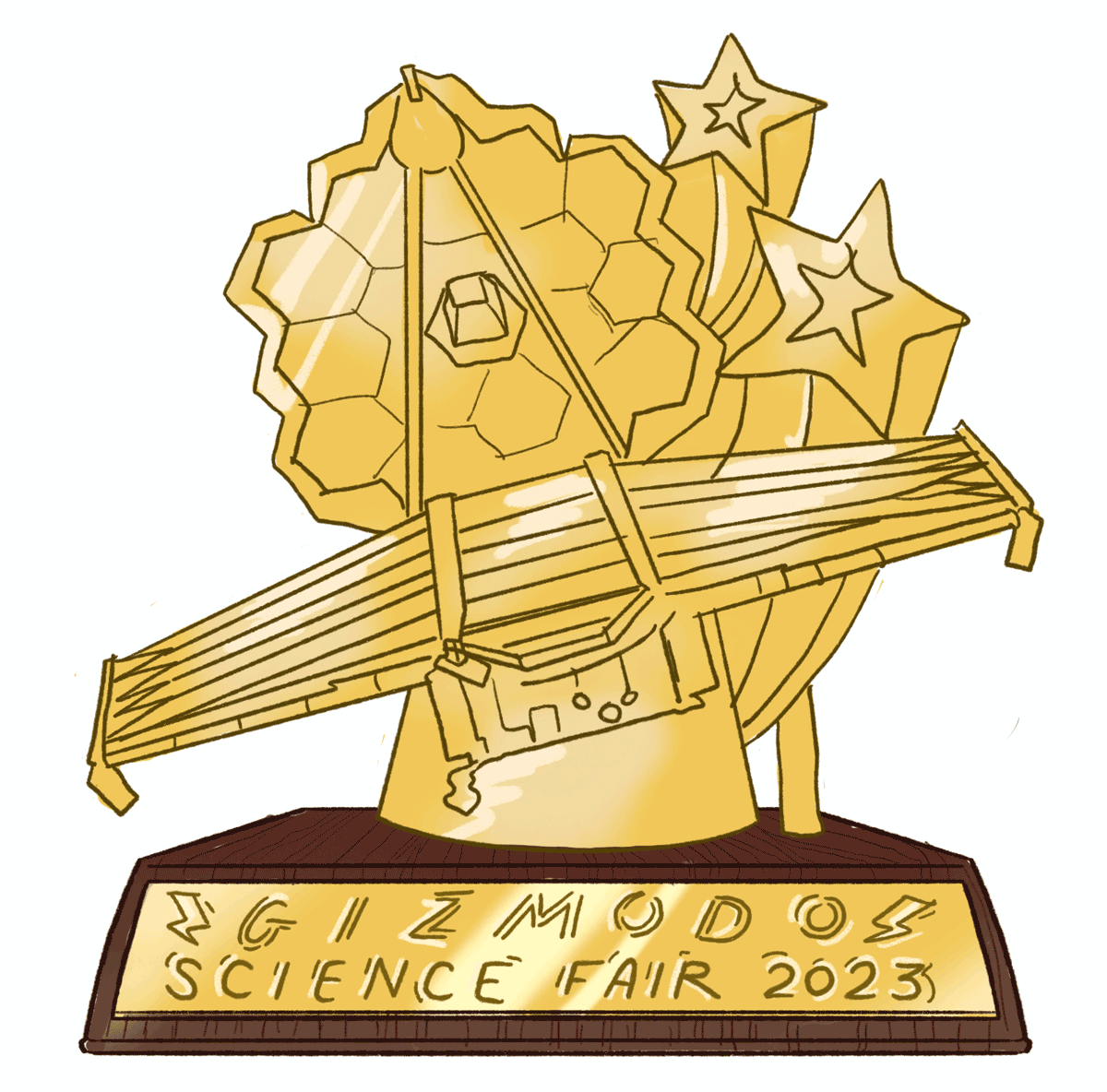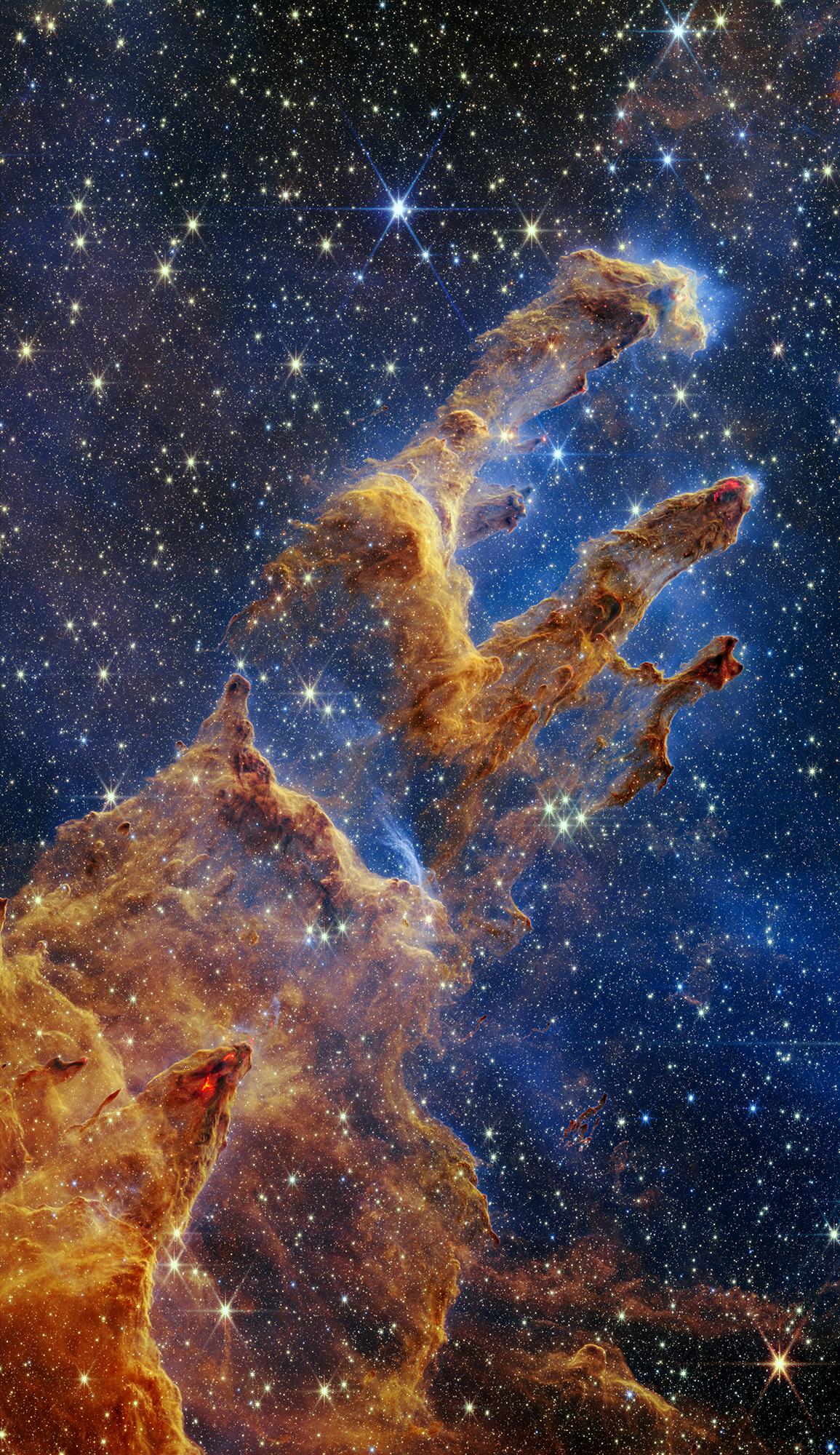The Webb Space Telescope image processors are winners of the 2023 Gizmodo Science Fair for translating the observatory’s infrared data into awe-inspiring images for the public.
The Question
How far back in time can we see, and how can the oldest observable light change what we know about the universe?
The Results
The $US10 ($14) billion Webb Space Telescope has imaged some of the universe’s earliest light, sometimes from sources only a few hundred million years after the Big Bang. The telescope takes in light at infrared and near-infrared wavelengths, allowing it to see redder light than telescopes like Hubble. That’s especially good for seeing distant sources, which appear redder because their light has been stretched by the expansion of the universe on its way to us. Besides seeing primordial galaxies and ancient stars, the telescope has revealed previously unknown details of exoplanet atmospheres, regions of star formation in massive clouds of dust in space, and even given us new looks at planets in our own solar system.
But the human eye can’t see infrared light. That means the Webb data needs to be translated into visible wavelengths, something that’s just as much art as science. The image processors have to choose which aspects of an image to play up or down, depending on what is scientifically most interesting. In one picture, that may mean emphasising the contrast between two different types of gas in a nebula; in another, it may mean giving more vivid coloration to the energetic regions of star formation. Without their work, all the amazing results from Webb would be distinctly less beautiful and accessible.
Why They Did It
“The first images were a demonstration of what the telescope can do and how powerful it is, and what better way to do that than to show off the natural beauty of the cosmos through these images?” said Joe DePasquale, senior science visuals developer at the Space Telescope Science Institute. “Having someone available to take that data and reveal the inherent beauty that’s there is a really essential part of this, in terms of getting information out to the public.”
“The goal is always to educate and inspire. To do all those things, but then really focus it for Webb so that we can show off the science themes and what it’s supposed to do, what it’s capable of,” said Alyssa Pagan, science visuals developer at the Space Telescope Science Institute. “It’s almost like going through an ancient ruin. I mean, everything’s kind of like ruins with infrared data.”

“To me, the most exciting aspect of working with this is this sense of anticipation of what the future science results could be that would come out of Webb, that we can’t actually even envision yet at this point,” said Anton Koekemoer, research astrophysicist at the Space Telescope Science Institute. “There are about 20,000 people across the whole Webb project; it’s not just us. What you’re seeing is the cumulative result of that whole effort. The fact that this whole system can perform this well, I think that’s something that we can be proud of, basically for humanity’s sake.”
Why the Webb Telescope Image Processors Are Winner
The Webb image processors painstakingly translate copious amounts of infrared data into full colour for our viewing pleasure. The team is small — just a few people from the 20,000-odd who have worked on the space telescope — and they handle data from both of Webb’s primary imagers, the mid-infrared instrument (MIRI) and near-infrared camera (NIRCam). A composite image from Webb can be hundreds of millions of pixels, stitched together from hundreds or thousands of individual images. Their work is showing us new objects in unprecedented detail and known objects as never before.

It took 30 years and $US10 ($14) billion to get Webb designed, launched, and commissioned. Now that the telescope is operational — and working at a remarkable level of precision — NASA, the European Space Agency, and the Canadian Space Agency want to get everything out of it that they can. The Webb images are inspiring a new generation of space scientists to think beyond the borders of our atmosphere, just as the Hubble Space Telescope did three decades ago.
What’s Next
Webb has enough fuel to keep it in operation for about 20 years. The Webb team will be enabling more discoveries in that time, probing the nature of the earliest stars and galaxies, exoplanets, and even new views of objects in our solar system. Webb also sets the stage for future space observatories. The Roman Space Telescope (slated to launch this decade) will probe dark energy and the universe’s accelerating expansion. NASA also has plans for a telescope that would study the habitability of exoplanets orbiting nearby stars.
“I’d say the main challenge right now is that we’ve got a very new telescope with very new instruments, and it often takes time to characterise the instruments fully,” Koekemoer said. “You need to operate the instrument for several years before you can really push it to its limits.”
The Team
Joe DePasquale, senior science visuals developer at the Space Telescope Science Institute; Anton Koekemoer, research astrophysicist at the Space Telescope Science Institute; and Alyssa Pagan, science visuals developer at the Space Telescope Science Institute.
See the full list of Gizmodo Science Fair winners
Read more: How Are Webb Telescope Images Colorized?
